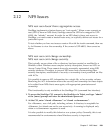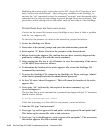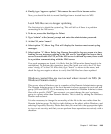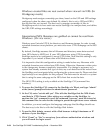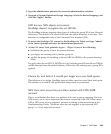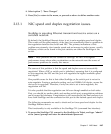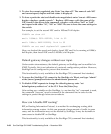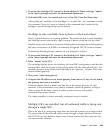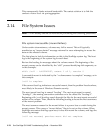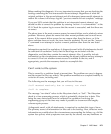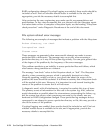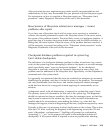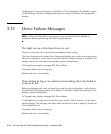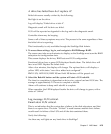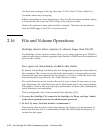
Chapter 2 NAS Head 2-69
1. To access the StorEdge CLI, connect to the StorEdge via Telnet, and type “admin”
at the [menu] prompt and enter the administrator password.
2. To disable RIP, enter “set routed.active no” at the CLI. Press the [Enter] key.
After setting any variables on the StorEdge, i.e. anytime the “set” command is used,
the command "savevars" must be entered at the command line in order for the
settings to persist though future server reboots.
StorEdge is only reachable from systems on the local subnet.
This is a clear indication of a routing problem. The clients are able to reach StorEdge,
but StorEdge cannot successfully reply, because it has no route back to the client.
Possible causes are as follows: incorrect default gateway setting, the default gateway
has been overwritten via ICMP or a manually configured TCP/IP route is needed.
To check the default gateway currently in use, proceed as follows:
1. To access the StorEdge CLI, connect to the StorEdge via Telnet, and type “admin”
at the [menu] prompt and enter the administrator password.
2. Enter “netstat” at the CLI.
The resulting display shows two sections, the local NIC configuration, and then the
routing table. Look for a route in the routing table with the destination 0.0.0.0. It is
normally the first route. Check the IP address in the “gateway” column. This is the
current default gateway.
3. Next, enter “show inet.gateway”.
4. Compare this IP address to the actual gateway found above. If they do not match,
the gateway has been overwritten.
If they do match, check to make sure that this is the correct gateway for your
network. If this information is not readily available, check the gateway setting of
other systems on the same subnet of other systems who are successfully
communicating across subnets.
The other possibility is that a manually configured route is needed.
Multiple NICs are installed, but all outbound traffic is being sent
through a single NIC.
This is the result of configuring more than one network interface on a single subnet.
The reason that all the network traffic travels through a single interface is the fact
that TCP/IP can only define a single route to each subnet, and this route can only
use one network interface.



